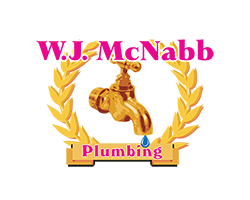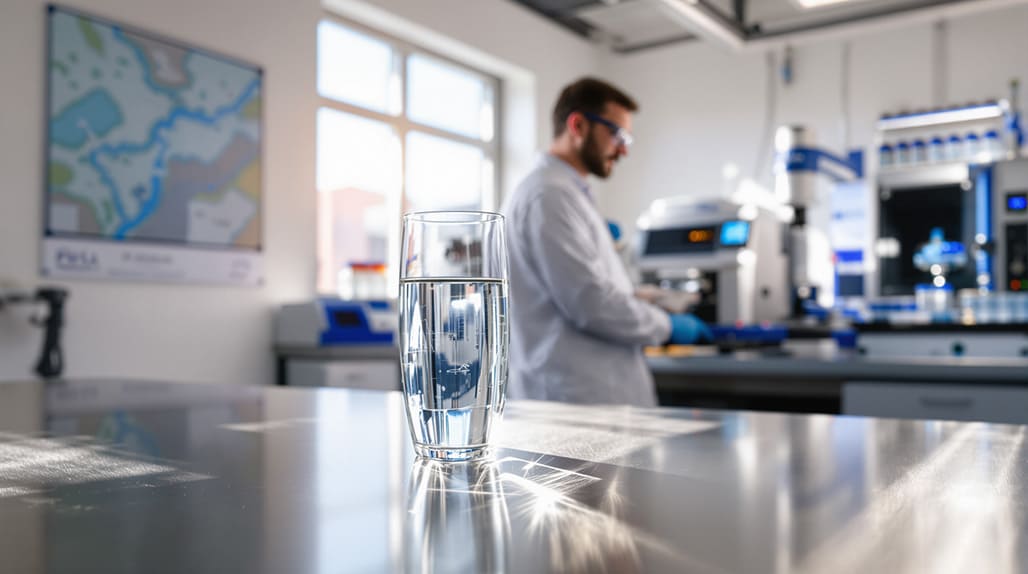Pittsburgh water quality gets tested daily for about 100 different compounds and microbes. The Pittsburgh Water and Sewer Authority (PWSA) treats 60 to 70 million gallons of water each day. This ensures the water from your tap meets all safety standards.
Pittsburgh’s tap water quality has improved by a lot over the last several years. The 2023 drinking water quality report shows that Pittsburgh water meets and exceeds all federal and state requirements. Your tap water’s lead levels have dropped to their lowest point in 20 years – below 4 parts per billion, down from 22 ppb in 2016. PWSA has replaced over 11,000 public lead water lines and more than 7,000 private ones since 2019. The water shows no detectable PFAS contamination levels thanks to proactive monitoring. These improvements are part of a $500 million upgrade that’s currently happening to the water pumping and distribution system.
Pittsburgh Water Quality Good Enough to Drink – A Look at the Facts
Pittsburgh’s tap water safety has improved dramatically. The latest water quality data shows that Pittsburgh tap water is safe to drink. The Pittsburgh Water and Sewer Authority (PWSA) now meets all federal and state drinking water standards [1][2]. This is a big change from past water quality issues.
Lead Levels Drop from 22 ppb (2016) to 3.4 ppb (2023)
Lead contamination shows the most impressive improvement in Pittsburgh’s water quality. Lead levels in Pittsburgh’s water reached 22 parts per billion (ppb) in 2016 [3]. This exceeded the Environmental Protection Agency’s action level of 15 ppb [1]. Many people called it a water crisis similar to Flint, Michigan [4].
The latest tests show remarkable progress. PWSA announced lead levels had dropped to just 3.4 ppb in July 2023 [1]. This was the lowest measurement in more than 20 years. Early 2024 testing confirmed these improvements, with levels staying low at 3.58 ppb [2]. These results came from high-risk homes with known lead service lines, which makes this achievement even more impressive.
PWSA has now kept lead levels well below regulatory limits for seven straight testing rounds [2]. PWSA CEO Will Pickering says, “Customers can be assured that we remain focused on treating our water to protect customers from exposure to lead while we maintain our programs to remove the remaining lead service lines” [1].
 PWSA_infographic to Lead Remove Success
PWSA_infographic to Lead Remove Success
Orthophosphate’s Role in Reducing Lead Exposure
Orthophosphate treatment has been the key to this reduction. PWSA started using this food-grade additive in April 2019 [5]. This decision came after the largest longitudinal study by water quality experts, approved by the Pennsylvania Department of Environmental Protection [5].
Orthophosphate works in a simple yet powerful way:
- Creates a protective coating inside lead service lines
- Makes an anti-corrosive barrier between lead pipes and water
- Stops lead from getting into drinking water [5][2]
Orthophosphate treatment alone isn’t enough. PWSA continues its aggressive lead service line replacement program. They’ve replaced over 11,000 public lead service lines and more than 7,000 private lines without charging customers [6]. PWSA wants to replace all lead lines by 2026 [6]. This tackles the root cause instead of just treating symptoms.
Experts say no amount of lead is safe [7]. PWSA offers free lead test kits and provides free water filter pitchers to residents whose tests show high lead levels [2].
How to Read the Pittsburgh Drinking Water Quality Report
The annual Pittsburgh drinking water quality report gives you a clear picture of what’s in your tap water and how it matches up with health standards. While this document has crucial information, people who aren’t specialists might find the technical details a bit tough to grasp.
Understanding MCL, MCLG, and Action Levels
Water safety depends on three key measurements in the report:
Maximum Contaminant Level (MCL) shows the highest amount of a contaminant that’s legally allowed in drinking water [8]. The standards are enforceable and set based on health goals, available treatment technology and cost.
Maximum Contaminant Level Goal (MCLG) shows the safe level where there’s no known health risk [8]. These public health targets aren’t enforceable and are often zero for substances known to cause cancer.
Action Level is different from MCLs – it’s a trigger point that requires specific responses when exceeded. Lead’s action level sits at 10 ppb [8]. Water systems must take extra steps like public education and replacing lead service lines when more than 10% of samples go above this level.
What Does ‘Non-Detect’ Really Mean?
A “Non-Detect” result doesn’t always mean zero – it just means the substance wasn’t found above what the lab can detect [9]. The Method Detection Limit (MDL) represents the lowest amount that testing equipment can measure reliably [10].
PWSA uses half the detection limit value to calculate averages when results fall below these limits [11]. This method gives a more realistic picture than assuming there’s nothing there at all.
How to Use the Lead Map and Request a Free Test Kit
The PWSA’s interactive lead map shows where lead service lines exist throughout Pittsburgh [7]. This helpful tool shows:
- Identified lead line locations
- Areas with replaced lines
- Future replacement sites
You can check your water’s lead content with a free test kit. Just call 412.255.2423 or email ServiceLines@pgh2o.com [12]. The kit takes 10-14 days to arrive and comes with pre-paid return shipping. Results take 4-6 weeks [7]. PWSA provides a free lead-certified water filter pitcher if they find high lead levels [7].
Limitations and Concerns: What the Report Doesn’t Tell You
Pittsburgh’s water meets regulatory standards, but the drinking water quality reports don’t tell the public everything about water safety. In spite of that, these limitations help paint a clearer picture of Pittsburgh water quality.
No TMDLs for Nutrient Pollution in Tributaries
Water quality reports usually skip any mention of Total Maximum Daily Loads (TMDLs) – pollution limits that could restore impaired waterways. Many streams around Pittsburgh don’t have TMDLs for nitrogen and phosphorus pollution. Without these limits, nutrient runoff from fertilizers, sewage, and industrial waste flows unchecked into smaller waterways that feed our drinking water sources.
Acid Mine Drainage and Industrial Legacy Risks
The city’s industrial heritage still affects its water quality. Old coal mines leak acidic, metal-laden water into groundwater and streams – a process called Acid Mine Drainage (AMD). This contamination adds iron, aluminum, and manganese to water systems. PWSA treats water to remove these metals, but their reports rarely show how this legacy pollution affects source water before treatment.
The reports highlight final water quality instead of showing the extra treatment needed to clean up pollution from historical sources.
PFAS Regulation Still in Early Stages
Per- and polyfluoroalkyl substances (PFAS) pose a new threat to Pittsburgh’s water quality. These “forever chemicals”:
- Never break down in the environment
- Build up in human tissues
- Can cause health problems
PWSA has started testing for PFAS voluntarily, but these efforts are just beginning. Pennsylvania doesn’t have strict PFAS standards and follows EPA health advisories instead. Detection technology has limits too, so consumers don’t get complete information about possible PFAS in their drinking water.
We see reports that focus on regulated contaminants with set limits rather than new concerns where science and regulations are still catching up.
Materials and Methods: How PWSA Ensures Water Safety
PWSA safeguards water quality for over 500,000 customers through detailed testing and treatment processes. Every glass of tap water you drink comes from a reliable system of quality controls designed to protect public health.
Daily Testing at Entry Points 101, 102, and 104
PWSA staff monitor water quality rigorously at designated entry points where water flows into the distribution system. The team tests for about 100 different chemical and microbial components throughout the treatment process [13]. Testing happens at these key locations:
- Water Treatment Plant: Staff conduct about 3,000 routine tests monthly [14]
- Microfiltration Plant: Teams monitor treated reservoir water continuously
- Distribution System: The team performs 1,500 more tests monthly across various points [14]
These tests check for microbial contaminants, inorganic compounds, pesticides, herbicides, organic chemicals, and radioactive substances [15]. This layered approach will give a safe drinking water supply.
Secondary Treatment at Highland Park Microfiltration Plant
Highland Park Microfiltration Plant serves as a vital second treatment layer for water from the open Highland I Reservoir. The facility reopened in 2020 after a $14.5 million upgrade and now serves Pittsburgh’s eastern neighborhoods, the Hill District, and parts of Oakland – over half of PWSA’s customers [16].
The plant can treat up to 20.8 million gallons daily [4] using two advanced methods:
- Membrane filtration removes particles and microorganisms
- Ultraviolet (UV) disinfection technology quickly destroys bacteria, pathogens, and protozoa that might contact water in the open reservoir [4]
This double treatment system keeps water quality consistent for 250,000 residents who rely on this facility [16].
Stormwater Management and Source Water Protection Plan
PWSA takes proactive steps to protect source water quality among other treatment measures. The authority’s Source Water Protection Plan tackles drinking water supply risks through:
- Delineation of source water protection areas [17]
- Inventory of potential contamination sources [17]
- Management strategies to address pollution risks [17]
- Contingency planning for emergencies [17]
- Protection of identified new source sites [17]
PWSA manages about 1,200 miles of sewer lines. About 75% of these are combined sewers that handle both wastewater and stormwater [18]. The authority builds new stormwater infrastructure to reduce flooding and pollution risks. This system captures rainfall at its source and allows it to soak into the ground before slowly releasing it back into the sewer system [18].
These integrated approaches show PWSA’s steadfast dedication to delivering safe, reliable drinking water from source to tap.

My Closing Thoughts on PSWA
Pittsburgh’s tap water safety has changed dramatically in the last decade. Your drinking water now meets or goes beyond all federal and state safety requirements. Lead levels dropped from 22 ppb in 2016 to just 3.58 ppb in early 2024. This big improvement came from adding orthophosphate treatment and PWSA’s aggressive lead service line replacement program.
Pittsburgh’s water quality management now has multiple protection layers. Teams test about 100 different compounds at various entry points daily. The upgraded Highland Park Microfiltration Plant gives vital secondary treatment with advanced membrane filtration and UV disinfection technology. Stormwater management systems protect source water from contamination before treatment begins.
Some challenges remain. The current system doesn’t provide detailed information about nutrient pollution in tributaries and doesn’t deal very well with legacy industrial contamination. PFAS rules are just starting to take shape, which leaves questions about these “forever chemicals” in your water supply. PWSA started voluntary monitoring, but the rules are still evolving.
$500 Million to Improve Pittsburgh Water Quality
PWSA’s $500 million infrastructure upgrade shows their steadfast dedication to better water quality long-term. Even though the water meets safety standards, many Pittsburgh residents want extra peace of mind about their drinking water. Consider a Free Water Filtration System Estimate to add protection against contaminants that municipal treatment might miss.
Safe drinking water needs constant watchfulness, investment, and community participation. Understanding what’s in your tap water helps you make smart choices about your household water use. Pittsburgh’s water quality shows great progress, but work remains to protect public health fully.
——————–
Disclaimer: The prices mentioned in this blog are for informational purposes only and our due diligence of calling around. Remember pricing may vary based on location, job complexity, and other factors. Actual costs may differ and are subject to change without notice. For an accurate estimate, please contact a licensed plumbing professional.
Meet the Founders: Melisa and William (Bill) McNabb
William “Bill” McNabb is the co-owner and master plumber of W.J. McNabb Plumbing, a highly respected, family-owned plumbing company serving Pittsburgh, PA, and surrounding communities. With over 40 years of hands-on experience in the plumbing industry, Bill leads the company’s operations and is recognized for his technical expertise, integrity, and commitment to customer satisfaction. Bill holds NASSCO certifications in PACP, MACP, and LACP, ensuring his team adheres to the highest standards in pipeline and infrastructure assessment.
Melisa McNabb is the co-owner and office manager of W.J. McNabb Plumbing. She plays a pivotal role in the company’s daily operations, customer relations, and business development. Melisa is often the first point of contact for customers, ensuring that each client receives prompt, friendly, and knowledgeable service. She is instrumental in upholding the company’s mission of delivering top-rated service and maintaining a seamless experience for both customers and staff.
Location
W.J. McNabb Plumbing operates from their McKees Rocks location, serving homeowners and businesses throughout Pittsburgh and the surrounding communities. Their expert plumbing services and customer care reach neighborhoods across Allegheny, Beaver, Butler, and Washington Counties
Why Trust WJ McNabb Plumbing
You should call W.J. McNabb Plumbing because they treat every customer like a neighbor, showing up promptly, explaining repairs clearly, and always respecting your home and time. Their team is known for being personable, patient, and genuinely caring—whether you’re in a panic with a leak or just need advice, you’ll get friendly, honest service from people who want to make your day easier, not harder. Homeowners consistently praise their professionalism, kindness, and the peace of mind that comes from working with a family-owned business that values relationships as much as results.
Frequently Ask Questions by Residence
Is Pittsburgh tap water safe to drink now?
Yes, Pittsburgh tap water is now safe to drink. Recent tests show that it meets or exceeds all federal and state safety standards, with lead levels dropping significantly from 22 ppb in 2016 to just 3.58 ppb in early 2024.
How often is Pittsburgh's water quality tested?
Pittsburgh’s water quality is tested daily at multiple entry points. The Pittsburgh Water and Sewer Authority (PWSA) conducts approximately 3,000 routine tests monthly at the Water Treatment Plant and about 1,500 additional tests throughout the distribution system.
What improvements have been made to Pittsburgh's water system?
Major improvements include the introduction of orthophosphate treatment to reduce lead exposure, an aggressive lead service line replacement program, and a $500 million upgrade to the water pumping and distribution system. The Highland Park Microfiltration Plant has also been renovated to provide advanced treatment.
Are there any remaining concerns about Pittsburgh's water quality?
While significant improvements have been made, there are still some concerns. These include the lack of Total Maximum Daily Loads (TMDLs) for nutrient pollution in tributaries, potential risks from acid mine drainage, and the early stages of PFAS regulation and monitoring.
How can residents check the lead levels in their water?
Residents can request a free lead test kit from PWSA by calling 412.255.2423 or emailing ServiceLines@pgh2o.com. PWSA also provides an interactive lead map showing known lead service line locations throughout Pittsburgh, which residents can use to check their area.
References
[1] – https://www.pgh2o.com/news-events/news/press-release/2023-07-28-pwsas-lead-levels-hit-new-lowest-level-decades
[2] – https://www.pgh2o.com/news-events/news/press-release/2024-02-06-pwsas-lead-levels-continue-trend-low
[3] – https://www.wesa.fm/environment-energy/2024-06-07/pittsburgh-tap-water-lead-levels-fall
[4] – https://www.pgh2o.com/news-events/news/press-release/2020-07-20-highland-park-microfiltration-plant-reopen-week
[5] – https://lead.pgh2o.com/orthophosphate-treatment-upgrade-underway/
[6] – https://www.pgh2o.com/news-events/news/press-release/2024-04-24-pwsa-removes-11000th-lead-service-line
[7] – https://www.pgh2o.com/your-water/lead-information
[8] – https://www.epa.gov/ground-water-and-drinking-water/national-primary-drinking-water-regulations
[9] – https://www.epa.gov/risk/regional-guidance-handling-chemical-concentration-data-near-detection-limit-risk-assessments
[10] – https://mytapscore.com/blogs/tips-for-taps/common-tap-score-report-terms-what-do-they-mean?srsltid=AfmBOopmuWuY80WLdnbmCs5VkGptjI0oM_zwJBJSIS9m3c-RH9Ru-7OA
[11] – https://www.tceq.texas.gov/assets/public/waterquality/swqm/assess/gawg/2012/june11_nondetects.pdf
[12] – https://apps.pittsburghpa.gov/pwsa/Lead_FAQ_-_July_2017_-_FINAL.pdf
[13] – https://www.pgh2o.com/your-water/water-quality-treatment
[14] – https://www.pgh2o.com/your-water/water-quality-treatment/water-quality-faq
[15] – https://www.pgh2o.com/news-events/news/newsletter/2023-10-27-trusting-your-tap
[16] – https://www.pgh2o.com/news-events/news/newsletter/2020-09-25-microfiltration-plant-back-service
[17] – https://authoring-dotcms-prod.awapps.com/paaw/water-quality/protecting-drinking-water-supplies/source-water-protection-planning
[18] – https://www.pgh2o.com/your-water/stormwater

